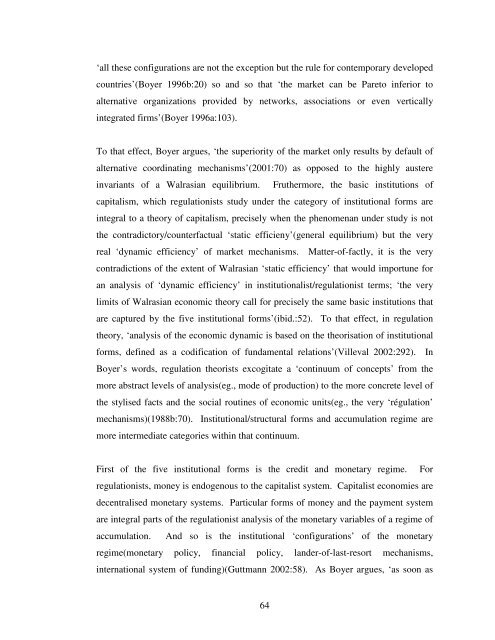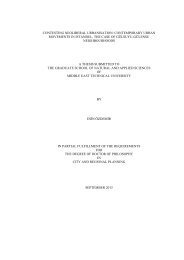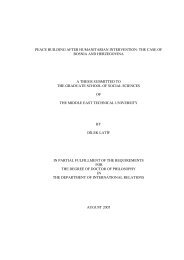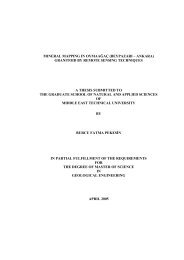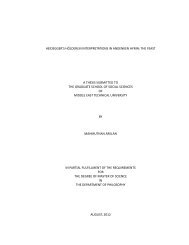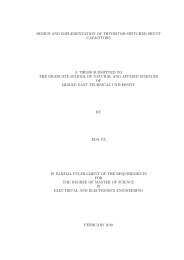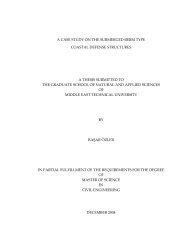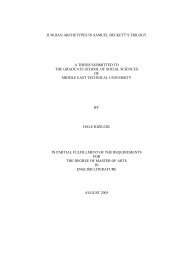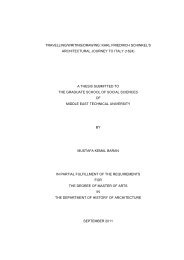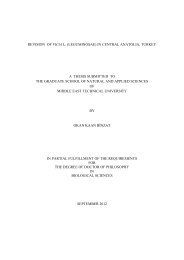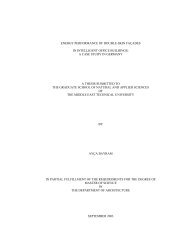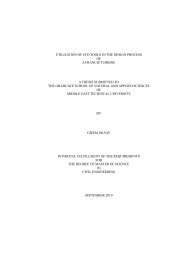View Original - Middle East Technical University
View Original - Middle East Technical University
View Original - Middle East Technical University
Create successful ePaper yourself
Turn your PDF publications into a flip-book with our unique Google optimized e-Paper software.
‘all these configurations are not the exception but the rule for contemporary developed<br />
countries’(Boyer 1996b:20) so and so that ‘the market can be Pareto inferior to<br />
alternative organizations provided by networks, associations or even vertically<br />
integrated firms’(Boyer 1996a:103).<br />
To that effect, Boyer argues, ‘the superiority of the market only results by default of<br />
alternative coordinating mechanisms’(2001:70) as opposed to the highly austere<br />
invariants of a Walrasian equilibrium. Fruthermore, the basic institutions of<br />
capitalism, which regulationists study under the category of institutional forms are<br />
integral to a theory of capitalism, precisely when the phenomenan under study is not<br />
the contradictory/counterfactual ‘static efficieny’(general equilibrium) but the very<br />
real ‘dynamic efficiency’ of market mechanisms. Matter-of-factly, it is the very<br />
contradictions of the extent of Walrasian ‘static efficiency’ that would importune for<br />
an analysis of ‘dynamic efficiency’ in institutionalist/regulationist terms; ‘the very<br />
limits of Walrasian economic theory call for precisely the same basic institutions that<br />
are captured by the five institutional forms’(ibid.:52). To that effect, in regulation<br />
theory, ‘analysis of the economic dynamic is based on the theorisation of institutional<br />
forms, defined as a codification of fundamental relations’(Villeval 2002:292). In<br />
Boyer’s words, regulation theorists excogitate a ‘continuum of concepts’ from the<br />
more abstract levels of analysis(eg., mode of production) to the more concrete level of<br />
the stylised facts and the social routines of economic units(eg., the very ‘régulation’<br />
mechanisms)(1988b:70). Institutional/structural forms and accumulation regime are<br />
more intermediate categories within that continuum.<br />
First of the five institutional forms is the credit and monetary regime. For<br />
regulationists, money is endogenous to the capitalist system. Capitalist economies are<br />
decentralised monetary systems. Particular forms of money and the payment system<br />
are integral parts of the regulationist analysis of the monetary variables of a regime of<br />
accumulation. And so is the institutional ‘configurations’ of the monetary<br />
regime(monetary policy, financial policy, lander-of-last-resort mechanisms,<br />
international system of funding)(Guttmann 2002:58). As Boyer argues, ‘as soon as<br />
64


